Chris Parkin explores something a little different in this test and review of the Chiappa Little Badger in 22 WMR...
Check out our YouTube channel here!
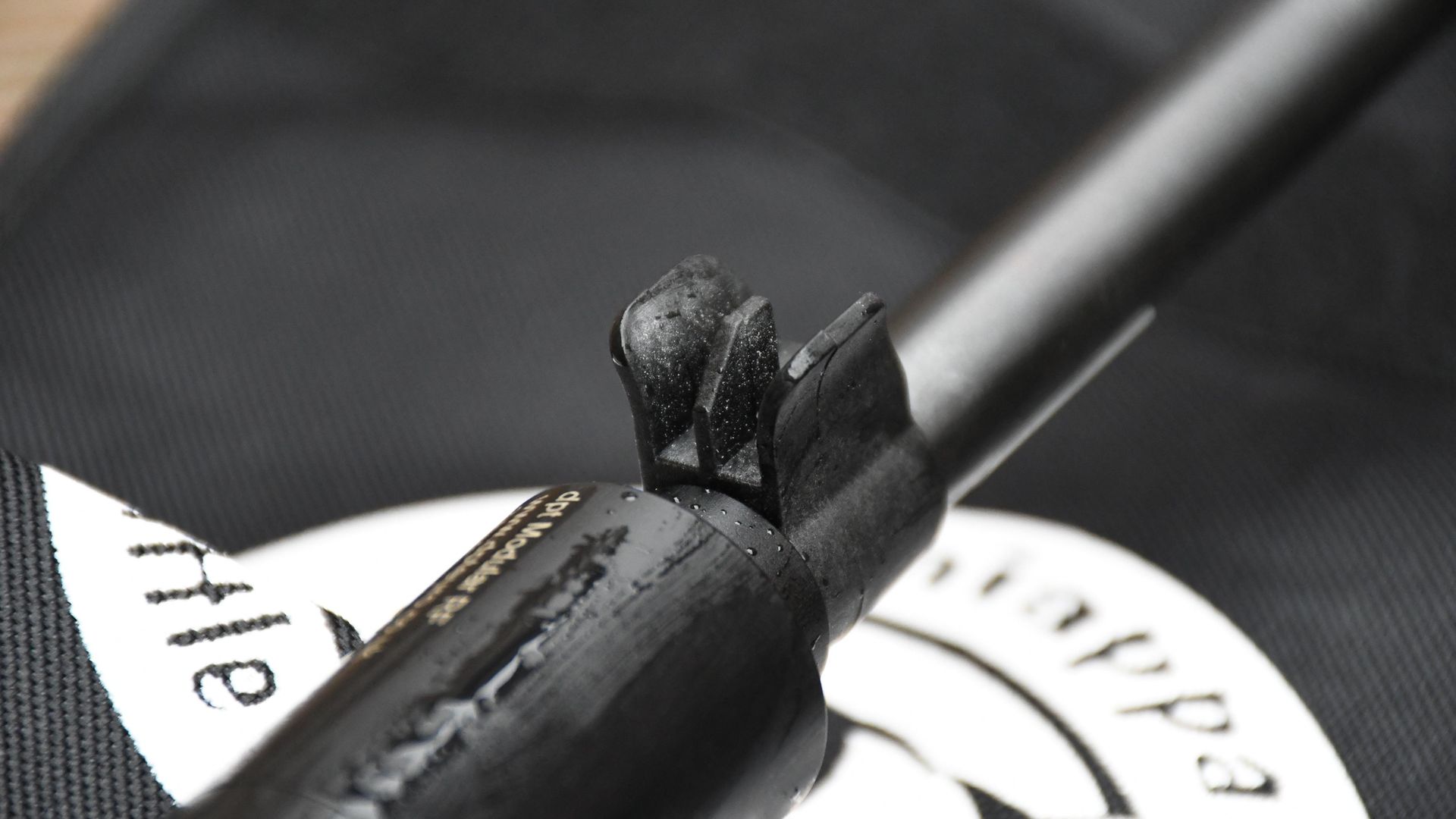 credit: Chris Parkin
credit: Chris Parkin
I do love an unusual rifle and Chiappa’s Little Badger is definitely that. It’s available in .22 LR, .17 HMR and the less common .22 WMR; I asked for the latter version simply because it seems to encapsulate the perfect use for the rifle – a tool to do a job.
Whether used as a fast-handling gun to keep in the cab around the farm or a fun plinking rifle, the Little Badger definitely offers no frills service with a very honest reputation. The 14.6mm diameter barrel is 420mm/16.5" long and screwcut ½"x28 tpi for a moderator, which I happened to have in the form of a DPT end-of-barrel unit.
The thread has a tight polymer cap, and once off shows well-cut smooth steel right up to the shoulder ahead of the blade foresight. Back down the barrel you next meet a four-way Picatinny style mount, again in polymer for accessories.
Small scopes, red dots or even night vision are simple enough to fix in place with the correct mounts, which need to be high enough to keep the optic above the rear sight. I got to grips with the rear peephole and front blade on paper before Raytrade supplied an Aimpoint for a slightly easier life.
I actually found a PARD 008 was a pretty much perfect fit over the rear sight and I do intend to do some rabbiting further down the line with this rifle. It’s also superb for clearing live catch traps as it’s so easy to fold up and store, as well as carry discreetly for house calls to chicken owners who have caught ‘visitors’ that they are unsure how to deal with.
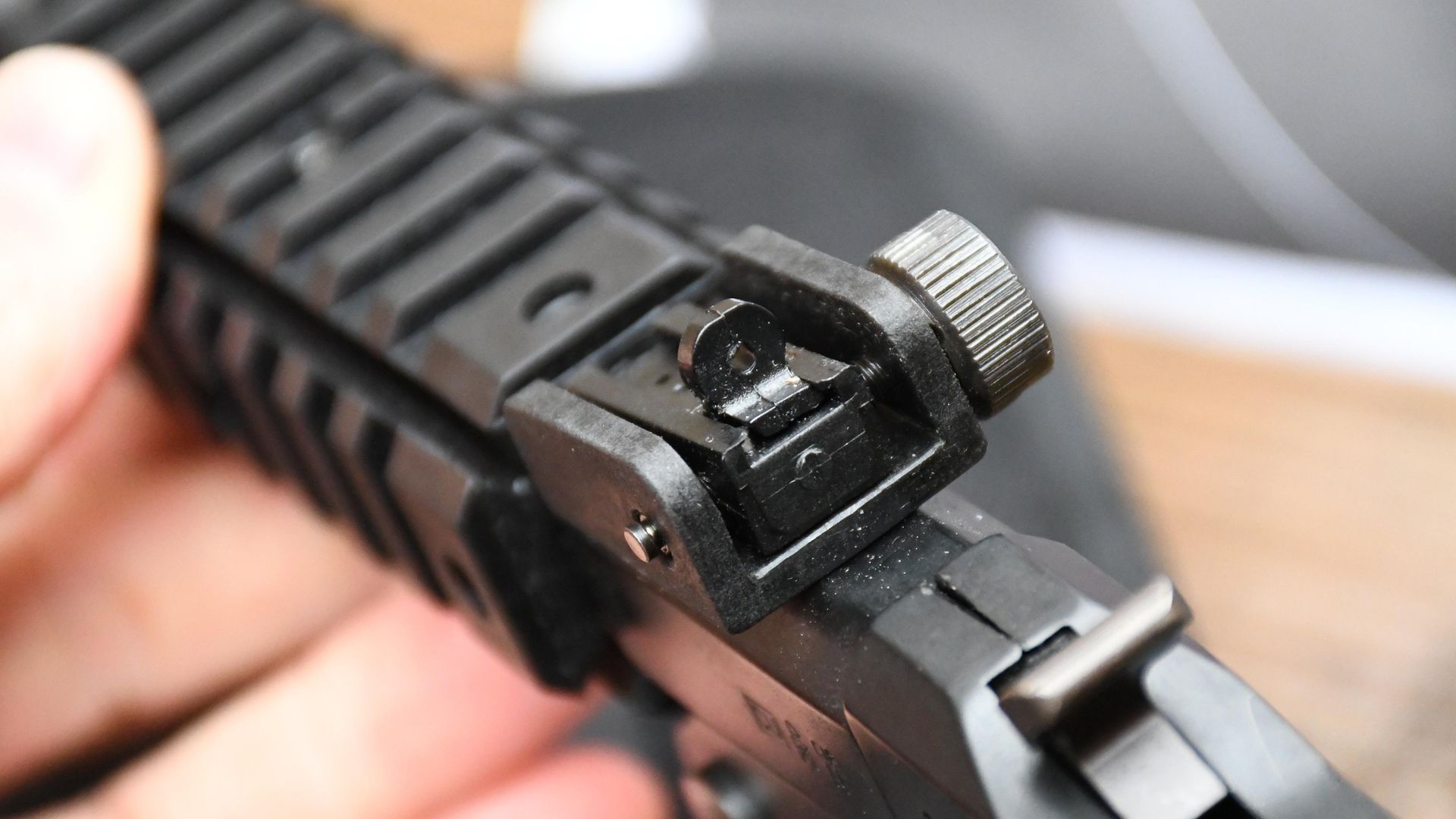 credit: Chris Parkin
credit: Chris Parkin
Open sight action
The front blade has wings for protection and to minimise light disturbance with an adjustable peephole rear sight offering five detented elevation positions to get things going. I actually prefer a peephole sight to an open notch style as I find them easier to centre the front blade in and like any aperture are more forgiving, with greater depth of field.
The gun folds open with the lever unlatching the hinged action just in front of the trigger guard. As it opens fully, an extractor claw lifts out previous brass for easy removal. You just slide another in and close, being careful not to snag the brass by snapping the action shut too rapidly. Everything clicks into place reassuringly and all you have to do is cock the external hammer to go live and pull the trigger for a shot.
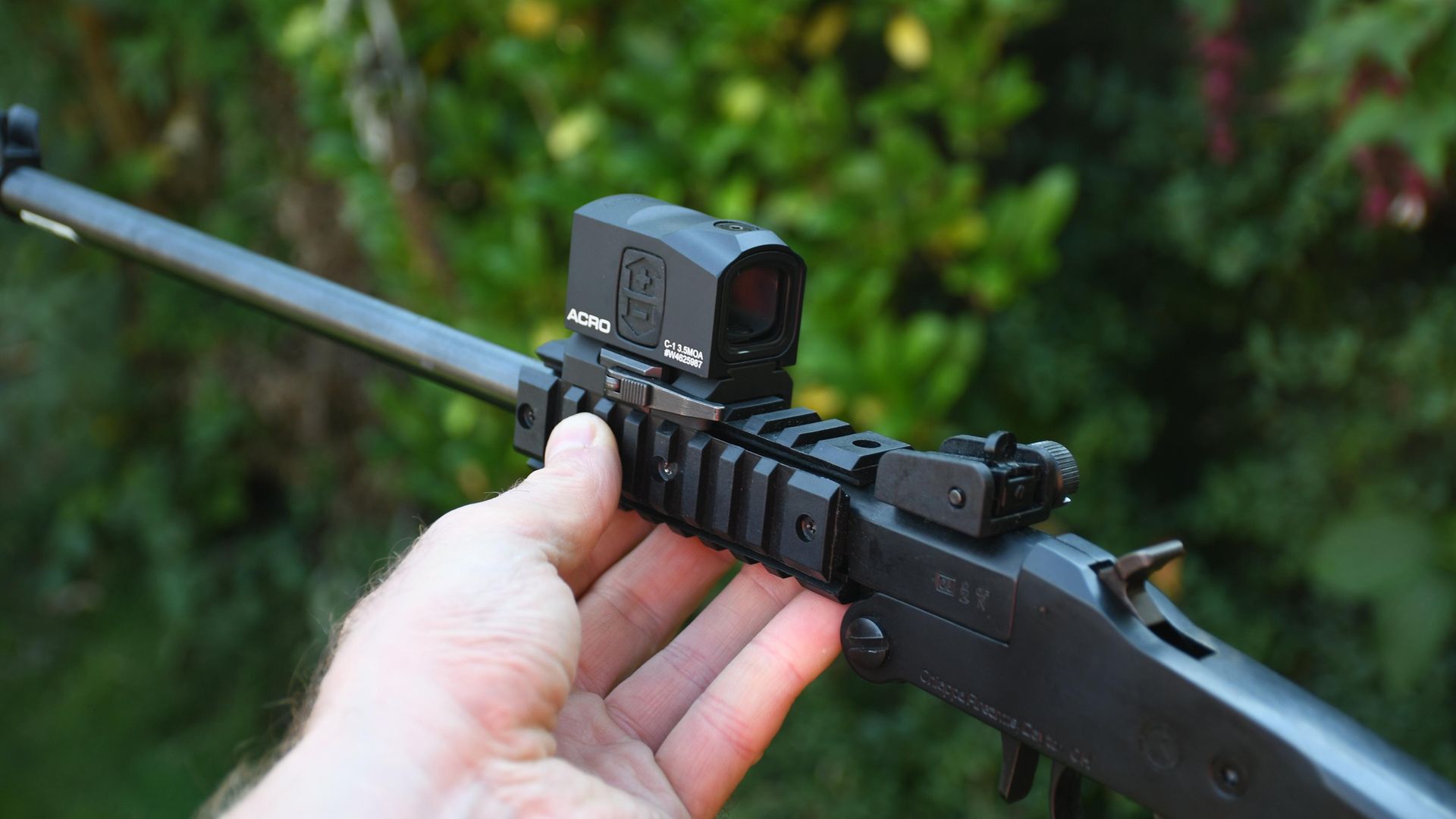 credit: Chris Parkin
credit: Chris Parkin
What a fantastic trigger
The underslung trigger has minimal space in the guard, so you won’t be using heavy gloves, but it’s surprisingly good, with a perfectly crisp break at 1,500gr/53oz. I really liked this, as a good trigger always helps get the best from any rifle, never mind one that is clearly made to a price.
All the action is machine sculpted alloy in a deep blue with a slightly odd piece of ‘micro Picatinny’ rail behind the trigger guard. Length of pull is just under 12.5"/315mm to the moulded polymer recoil pad/cup that bridges the twin 6.1mm metal bars forming upper and lower ‘stock’ extensions. These have nothing between them except for the ammunition holder just in front of the butt, which holds six rounds either side.
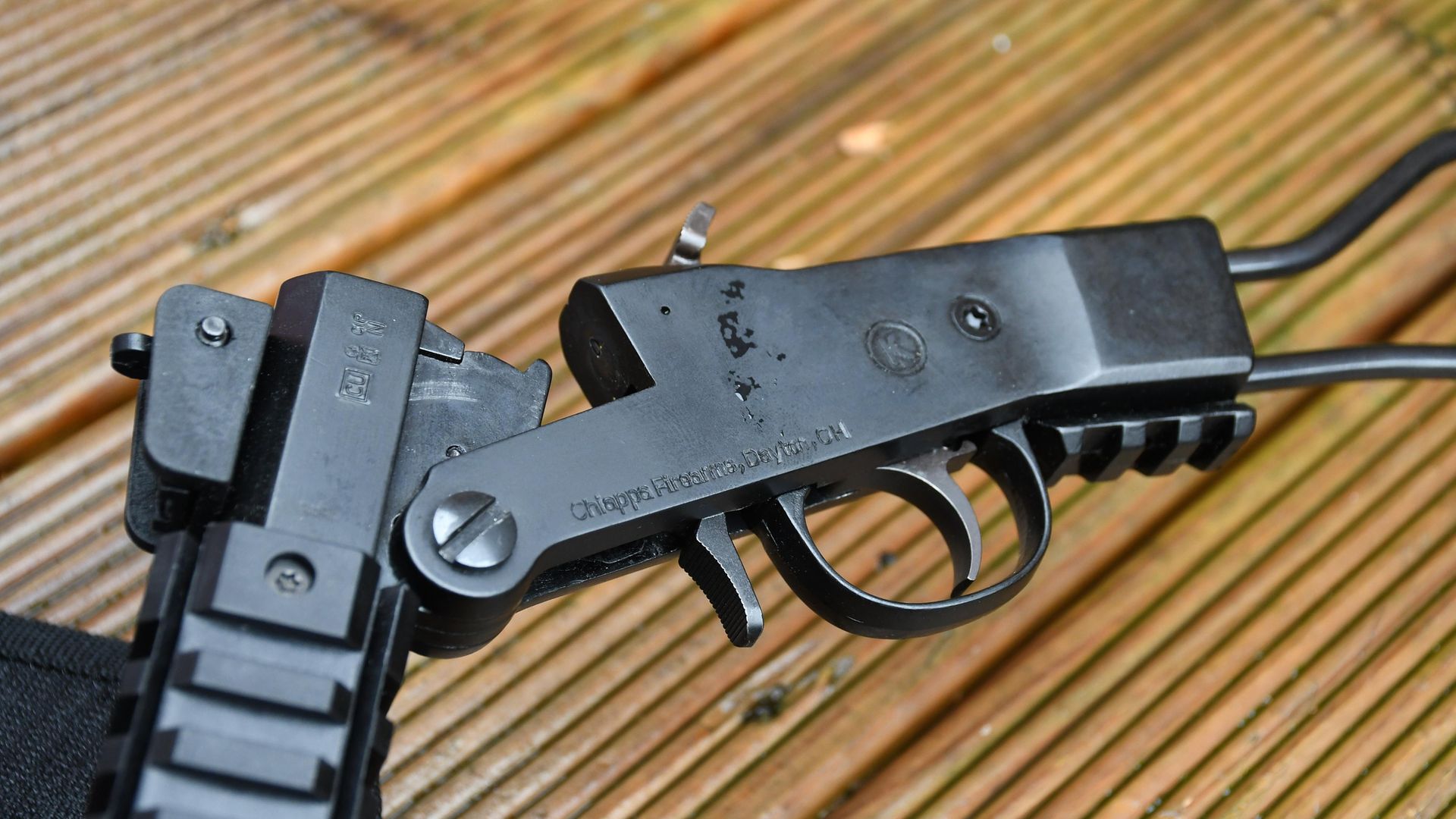 credit: Chris Parkin
credit: Chris Parkin
Brutal honesty, sublime functionality
It’s hard to get too serious about performance on targets with a gun like this, yet it accompanied me to the range with a Blaser whose scope mount alone dwarfed it in price. Nevertheless, the Little Badger left me smiling after every shot. I set up a larger silhouette target at just 10m to get a handle on the open sight settings. This is super close, yet somewhat appropriate to a gun likely to be used for humane dispatch and small vermin control, especially without an additional optic.
After getting the windage set up, I experimented with the five sight positions and extended the distances steadily, initially just hoping for pings on steel gongs, yet returning to paper to record some groups as I was actually rather impressed with what the gun, ammo and my weakening eyes managed with open sights alone.
After swapping to the easier, faster-acquisition red dot Aimpoint and making far more hits with speed, I was extremely confident with the rifle as long as the 3.5 MOA red dot remained small enough on the target for a precise aim. Don’t discount the open sights though, as I was able to hold MOA on steel at 50m, with the long spacing or ‘sight radius’ making them fundamentally consistent. It’s the kind of shooting that practice rewards.
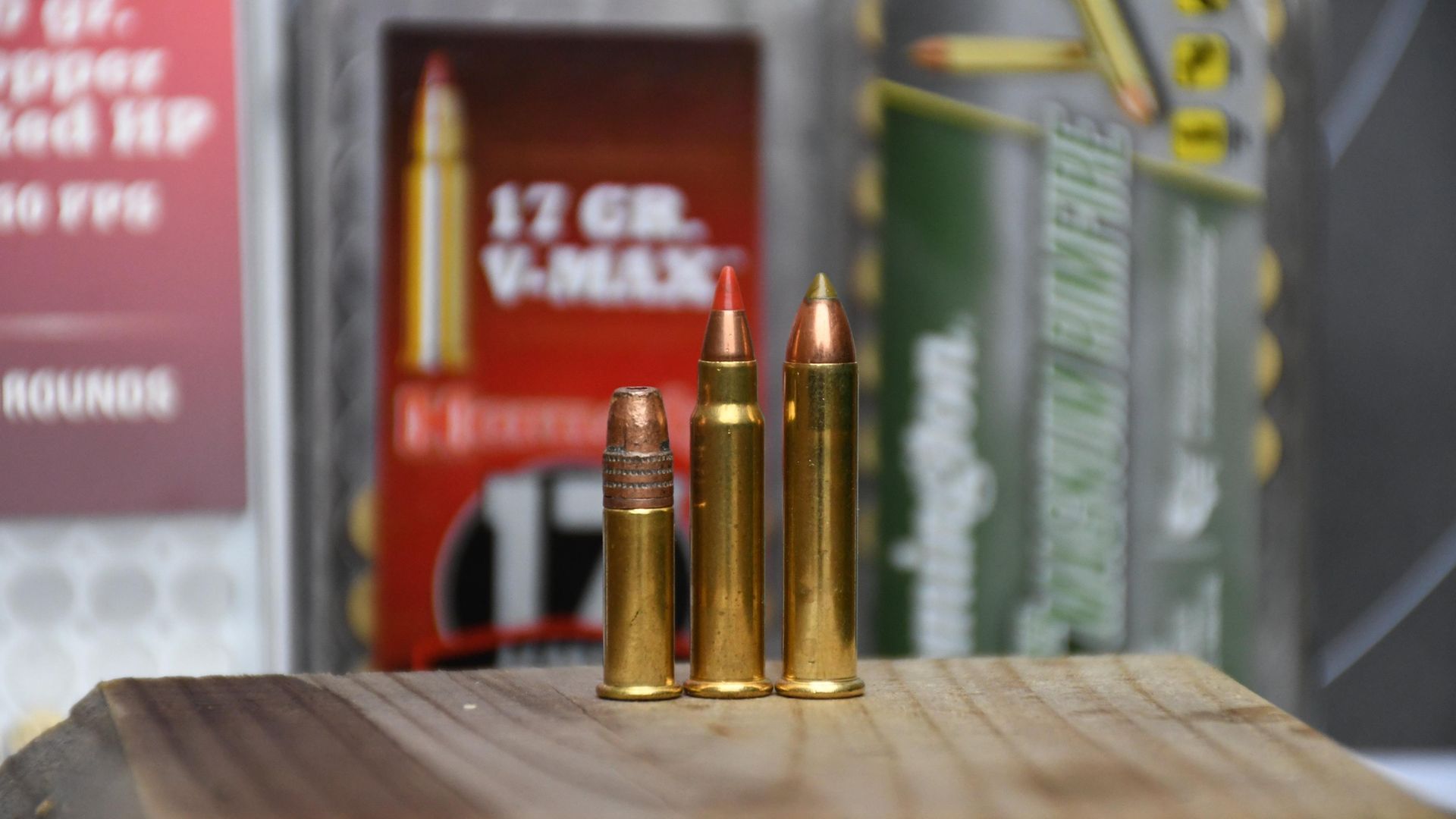 credit: Chris Parkin
credit: Chris Parkin
More shooting with less ammo
Remington’s 33gr Accutip ammo suggested a velocity of 2000fps on the box. In reality I wasn’t far off, with 1,986fps recorded as an average over the chronograph, which equates to 289 ft-lbs at the muzzle. This is entirely fox capable and I would be quite happy to do so out to 100m with a well-placed shot using an appropriate sighting solution.
Many quarry species will have been taken with this cartridge long before we had optics and high velocity modern offerings. Accuracy on paper was consistent with the ‘opens’ and I’m bursting to get a scope on it for more serious testing as this has rejuvenated my opinion of the WMR cartridge after a few failures to produce the goods in other rifles. I’m not going to quote group sizes yet, as I’m sure it’s my use of the open sights that is the weak link in the chain.
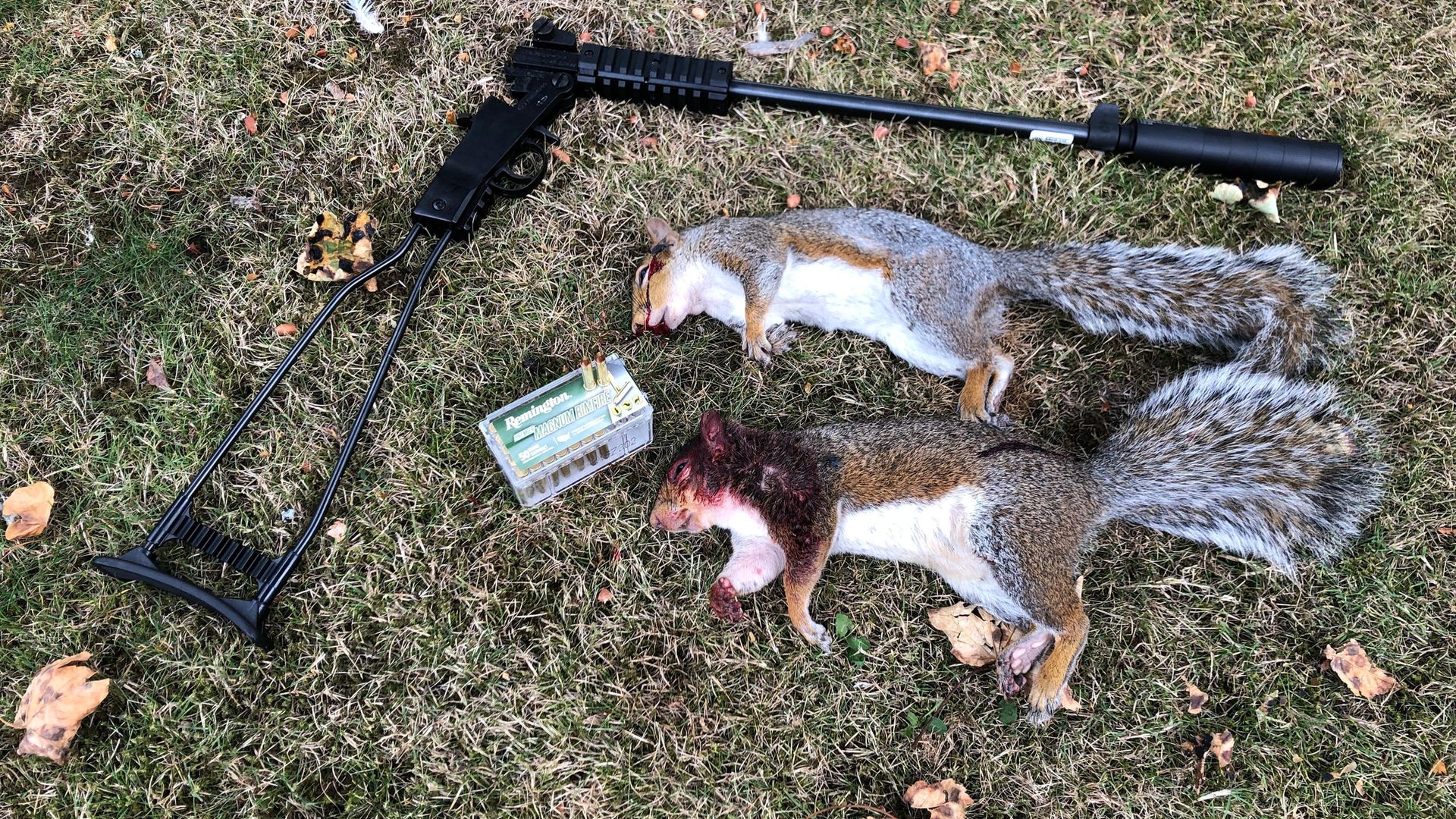 credit: Chris Parkin
credit: Chris Parkin
What is the gun good for?
So what is this gun for? Well, for starters it folds in half, making a sort of triangular shape for which Chiappa make and supply a backpack case to fit the rifle’s 430mm/17” folded length and 200mm/8” width at the widest point. OK, the moderator adds about 120mm to this but how often have you driven a piece of land and missed a close-in shot because you had to fumble, making loads of noise to get a full-sized rifle in place from the back of the vehicle, or narrow tractor.
Obviously, all legalities still apply but when I asked the farmer, he was bursting to have a go with the Little Badger and see how easy it was to fit next to his seat in the tractor, how fast he could load it and how accurately he could shoot it!
I took the rifle for a wander myself when scouting some locations on the farm and took a few squirrels with opportunistic close-in shots. I also missed three others for whatever reason, my fault with a misaligned sight picture probably. But was completely confident it was me that failed, not the Little Badger.
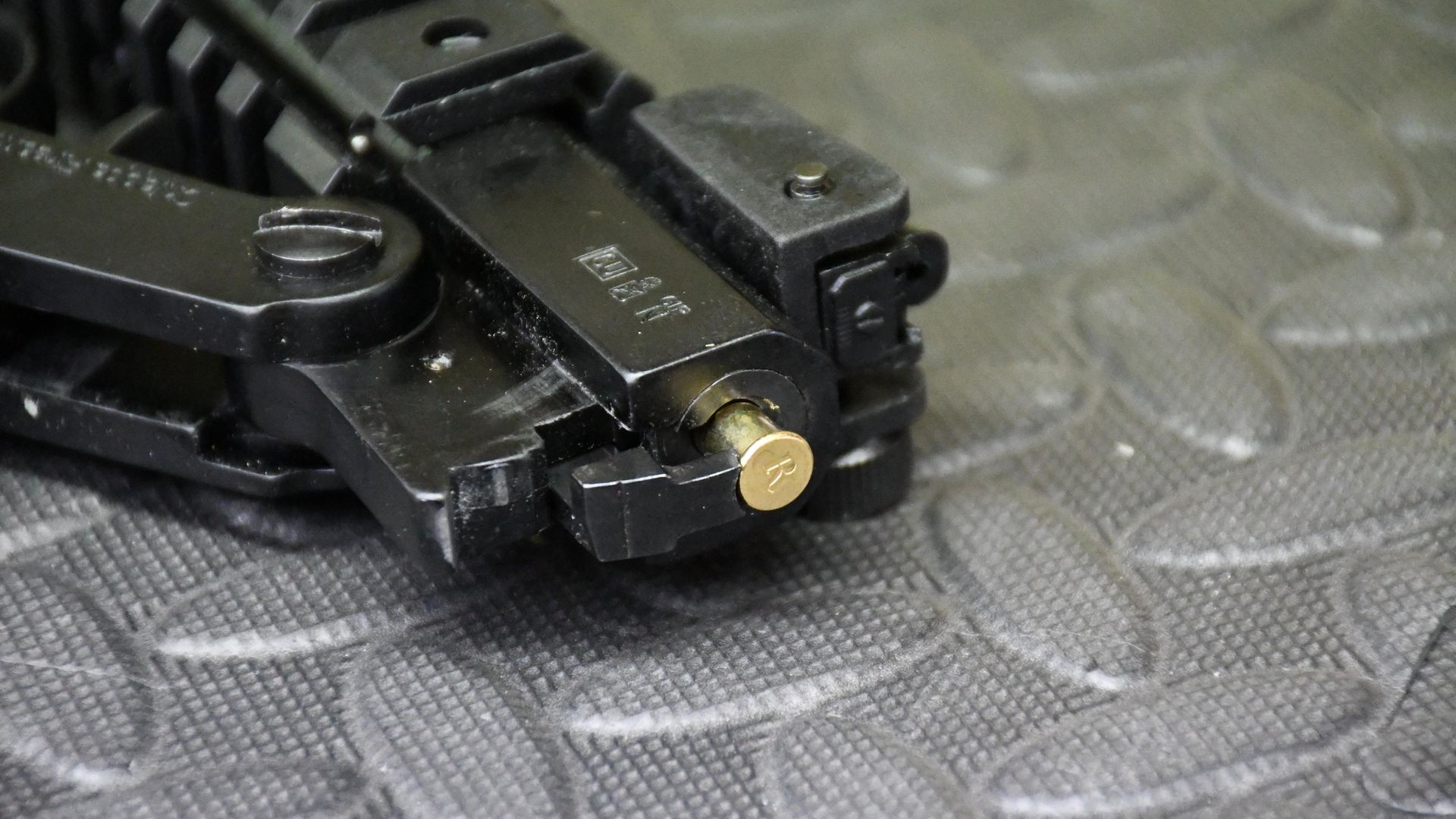 credit: Chris Parkin
credit: Chris Parkin
Italian soul
These Italian-made rifles are entirely honest guns, inexpensive, functional and utterly practical. They have no airs and graces but they do what they say they will – 100% to my satisfaction. I think I like that fact even more than I like the ‘group sizes’ that seem to impress people so easily.
In an entirely alternate role, the gun makes a fantastic trainer, perhaps not specifically in the UK but where people are taught to shoot single shot, single opportunity! There’s no accidental reloads or discharge from an unknown bullet count in the magazine. And with an easily visualised hammer, firm yet crisp trigger and short length of pull, it’s certainly a compelling little package. Long term, the action’s hinge pin has turnscrew slots that look like it is adjustable, and the locking mechanics seem strongly sprung with barely detectable play in the joint, none of which will affect zero as the scope or iron sights are on the barrel anyway.
Can you spare a ‘slot’?
Single-shot indoor or outdoor range plinking rifle, no problem. That’s exactly what I have loved it for. I think the only thing I could possibly criticise, and this is a very rare factor, is that to see through the peep sight at closest ranges, most ranges in fact, you really do need to squash your face into the upper stock bar to align your head. All faces are different but it’s really low, and a modest scope or red dot sight, just a little higher axis above the bore, would make this rifle for me. Never mind Little Badger, this is a little belter! If you have space on your certificate, which is of course a significant matter, this is as good a gun to own as a spring piston air rifle.
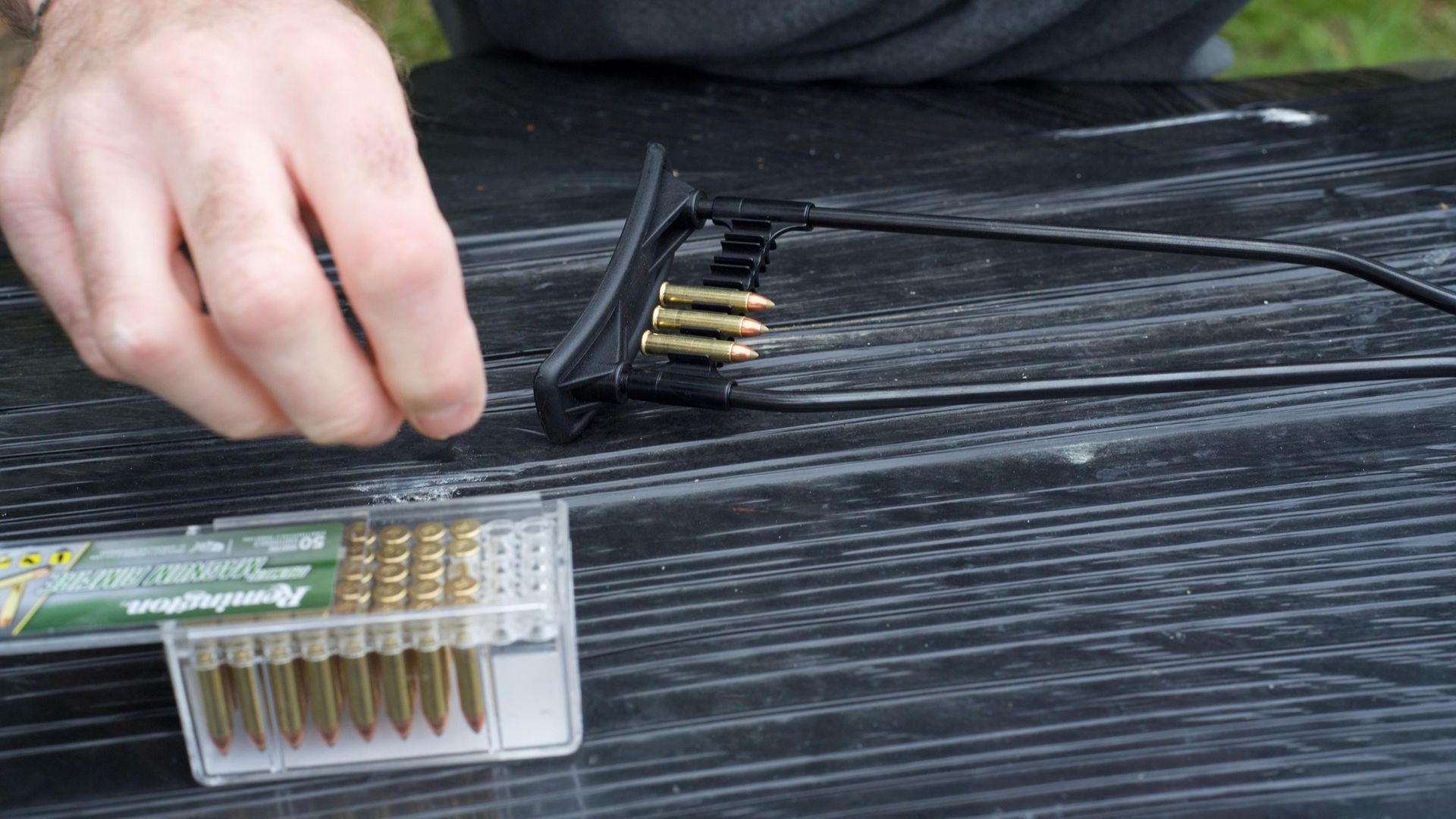 credit: Chris Parkin
credit: Chris Parkin
.22 WMR
.22 WMR is less frequently seen these days but essentially it uses the parent case of the popular .17 HMR. It’s slightly broader and certainly longer than standard .22 LR, with bullets similarly in the 30-40gr weight range. With 1 in 16" twist it gives good sub-100-yard knockdown power and, like the .22 LR, makes for effective humane dispatch if required on surprisingly large species.
With a moderator this supersonic round gives more of a snappy crack than a boom, with minimal muzzle blast even at close quarters in buildings or vehicle cabs. You can also get subsonic ammunition that won’t even make that supersonic crack as it flies. Just be aware that it gains the energy benefits from velocity over the .22 LR, so if you do choose subsonic you are effectively shooting a slightly less efficient/large case 22 LR in terms of muzzle energy with a greater price but perhaps adding versatility.
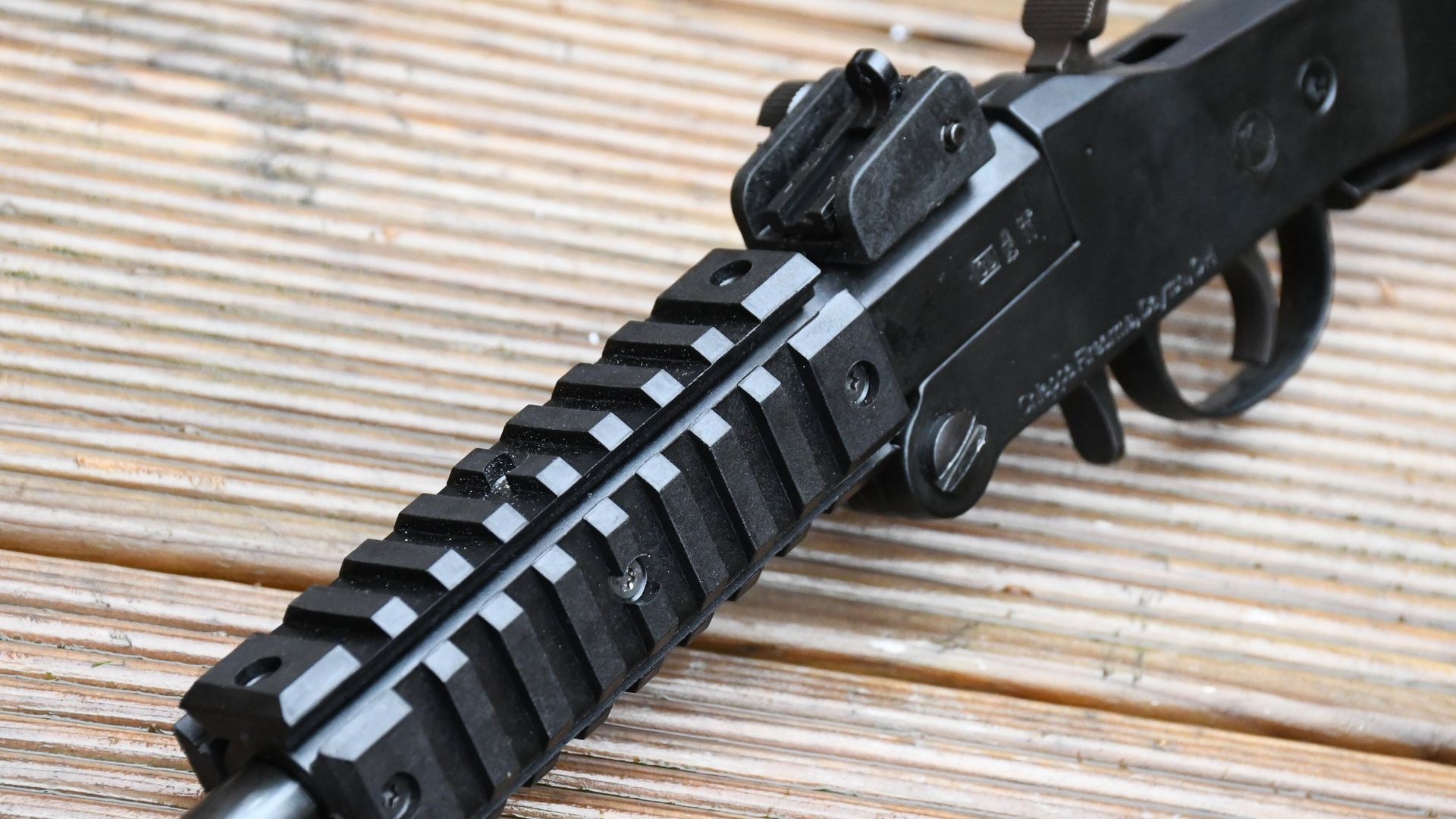 credit: Chris Parkin
credit: Chris Parkin
TECHNICAL SPECIFICATIONS
Calibre: .22 Winchester Magnum
Action: Folding break open
Barrel length: 16.5" (419 mm)
Capacity: 1
Ammunition feed: Manual
Trigger system: Single
Stock: Wire steel
Forend: Quad Picatinny
Weight: 2.9 lb
Length: 31" (787 mm)
Material: Alloy frame/steel barrel
Finish: Blued
Extraction: Manual
Includes: Backpack, 1/2"-28 threaded barrel with protective cap
Contact: www.raytrade.co.uk (also for supplier of Remington ammunition)